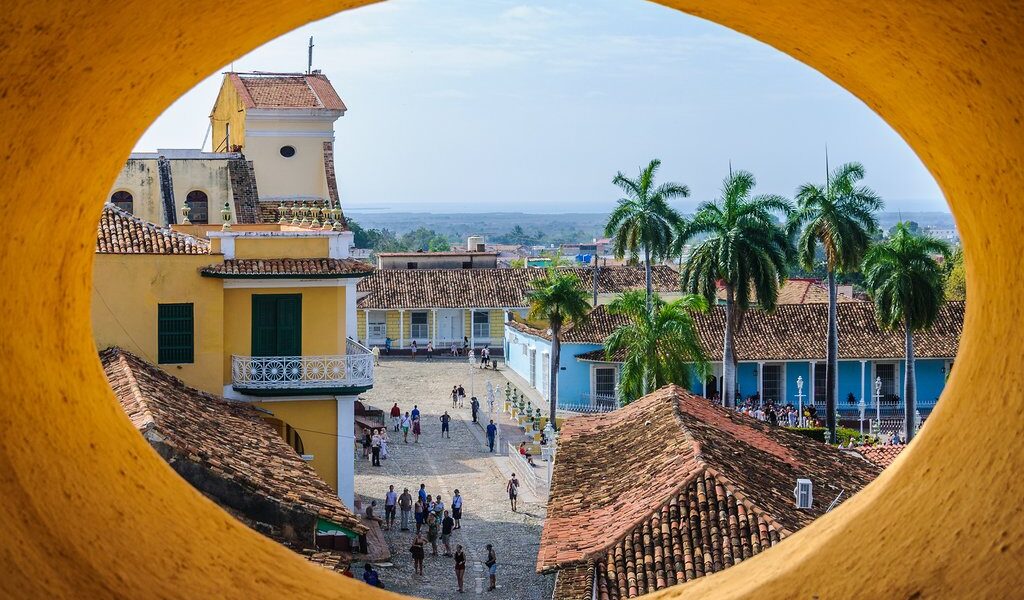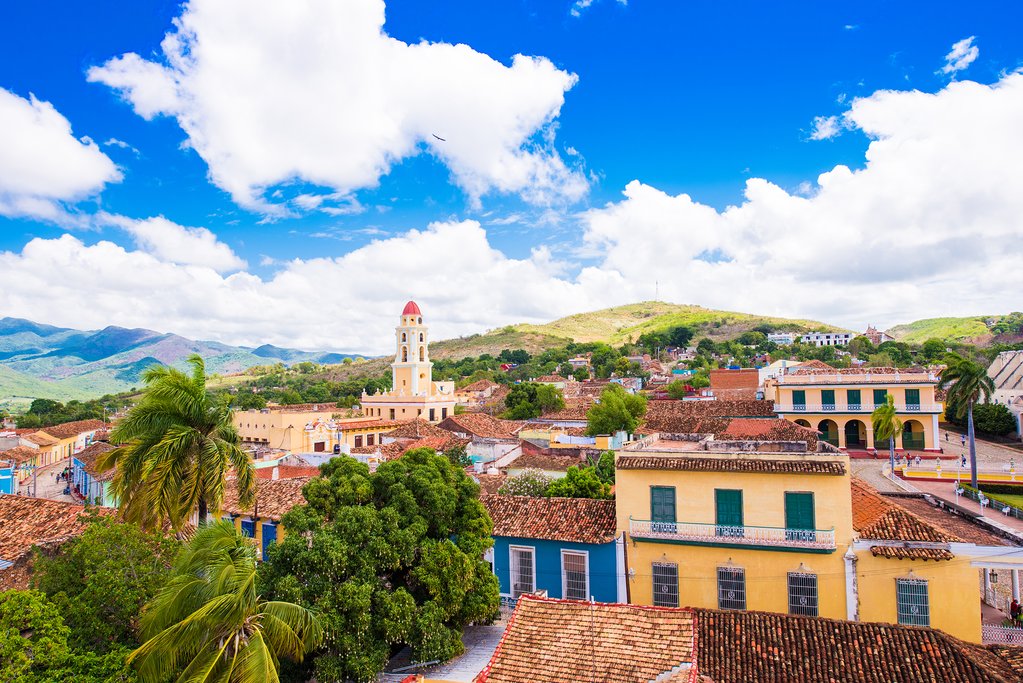
Along with Havana and Viñales, Trinidad is one of the most popular destinations in Cuba. Tens of thousands of visitors flock here every year to wander the cobbled streets of this well-preserved colonial city overlooking the Caribbean. There’s a ton to see and do here, so let the following recommendations inspire your itinerary.
## A Deeper Dive into Trinidad: A Journey Through Time and Culture
Trinidad, a captivating city situated approximately four hours southeast of **Havana** by car, offers a unique and immersive experience akin to stepping back in time. Founded in the year 1514, Trinidad flourished particularly during the 18th and 19th centuries. This period of prosperity was fueled by the sugar industry and, regrettably, the institution of slavery. Vast fortunes were amassed, leading to the construction of opulent mansions adorned with extravagant chandeliers, exquisite china, and gleaming silver. However, as time marched forward, Trinidad was largely forgotten, leaving behind a remarkably preserved snapshot of a bygone era. Today, Trinidad’s allure lies in its distinctive combination of perfectly preserved Spanish colonial architecture and a time-honored way of life that persists to this day.
While the winter months can bring an influx of tourists eager to explore this historical gem, it remains relatively easy to escape the more crowded areas and venture into the more rustic and authentic parts of the city. Beyond the city limits, a diverse array of attractions awaits, including pristine white-sand beaches perfect for relaxation, sprawling cattle ranches that evoke the spirit of the countryside, ancient haciendas that whisper tales of the past, and the majestic **Sierra Escambray Mountains**, offering breathtaking views and opportunities for outdoor adventure. To help you plan your visit, we’ve compiled a list of some of the best options for accommodation, dining, and entertainment during your stay in Trinidad. Prepare to be enchanted by this remarkable city, where history comes alive at every turn.
## Navigating Your Way to Trinidad
Reaching Trinidad is relatively straightforward, with several transportation options available to suit different preferences and budgets. For those arriving from North America, a direct flight to **Cienfuegos** is often the most convenient option. From Cienfuegos, you can then take a Víazul bus or a taxi to Trinidad, a journey that typically takes around 75 minutes. Many travelers choose to include Trinidad as part of a larger itinerary, arriving after visiting either Cienfuegos or **Santa Clara**, particularly if they are traveling from Havana or **Varadero**. Víazul buses provide a direct connection between Trinidad and these popular destinations, making it easy to incorporate Trinidad into your travel plans.
For a more unique and memorable experience, you can arrange for a taxi or a chauffeured ride in a beautifully restored classic 1950s automobile. This option allows you to travel in style and adds a touch of vintage charm to your journey. Alternatively, if you prefer the freedom and flexibility of driving yourself, you can hire a rental car in Havana. The most direct route to Trinidad involves following the Autopista Nacional and exiting for **Cienfuegos** at **Aguada de Pasajeros**. This route, which continues along the Costera Sur coast road linking Cienfuegos to Trinidad, typically takes around 4.5 hours. As another option, you can remain on the Autopista all the way to Santa Clara. After exploring the sights of Santa Clara, you can then head south on Ruta 4-474, passing through **Manicuragua** and the picturesque Sierra Escambray, offering stunning scenery along the way.
Navigating from Havana’s International Airport to the Autopista is relatively simple. Upon exiting the airport, take Ruta 246—the main highway leading away from the airport—north for approximately four miles until you reach the traffic circle located by the Oro Negro gas station. At the traffic circle, turn right and follow this road east for about six miles as it becomes the Circunvalación (ring-road). Continue along the Circunvalación until it connects to the Autopista, providing easy access to your desired destination.
## Discovering the Heart of Trinidad: Sights and Activities
The true essence of Trinidad lies less in ticking off a list of museums and historical sites and more in immersing yourself in the city’s unique atmosphere. Wander through the virtually traffic-free cobbled streets, allowing yourself to be transported back in time as you admire the neoclassical and baroque colonial architecture that adorns the tile-roofed mansions and homes, all painted in vibrant tropical pastels. The historic core of Trinidad remains a vibrant and thriving community, offering a glimpse into a way of life that has remained largely unchanged for centuries. Here, you’ll witness mule-drawn carts traversing the streets, cowboys on horseback making their way through town, and the cheerful sounds of caged songbirds filling the air. Below are some of the principal sites of interest that should not be missed during your visit to Trinidad, each offering a unique perspective on the city’s rich history and culture.
### Plaza Mayor and its Environs
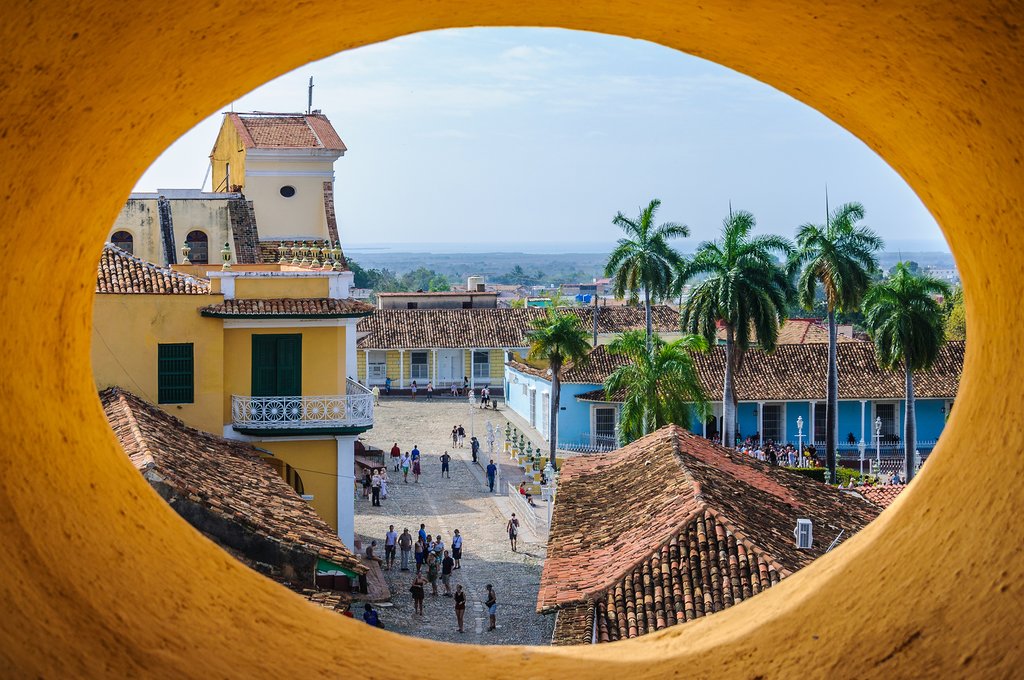
The majority of Trinidad’s historical sights are conveniently located within one or two blocks of **Plaza Mayor**, or directly on the plaza itself. This exquisite main plaza, enclosed by wrought-iron fencing and adorned with majestic royal palms, serves as the heart of the city and is surrounded by some of the finest examples of colonial architecture. Plaza Mayor is a hub of activity, a place to sit and observe daily life while taking in the sights and sounds around you.
**Iglesia Parroquial de la Santísima Concepción:** In stark contrast to its conservative 18th-century exterior, the cathedral, rebuilt in 1862, features a somber Gothic interior that is nonetheless intriguing. Inside, you’ll find notable statuary and a sense of reverence. A significant portion of the trinitarios (city locals) actively practice Catholicism, and attending Sunday Mass provides a unique opportunity to witness the local culture and traditions firsthand. The cathedral stands as a testament to the enduring faith of the people of Trinidad.
**Museo de Arquitectura Colonial:** The City Historian’s Office has meticulously curated a museum of captivating interest, showcasing the evolution of colonial-period architecture in the region. The museum features superb displays and knowledgeable English-speaking guides who regale visitors with fascinating stories and insights. The Museo de Arquitectura Colonial is housed in the **Casa de los Sánchez Iznaga**, located on the east side of Plaza Mayor. A visit to this museum is highly recommended for anyone interested in learning more about the architectural heritage of Trinidad.
**Museo de Arqueología:** Once the residence of German explorer Alexander Von Humboldt, the former Casa Padrón, situated on the southwest corner of Plaza Mayor, now houses the Museo de Arqueología. The museum features a collection of archeological finds and exhibits dedicated to the local flora and fauna, providing a comprehensive overview of the region’s natural history. Explore the exhibits and discover the rich biodiversity that characterizes the area surrounding Trinidad.
**Museo Romántico:** Located on the northwest side of Plaza Mayor, the two-story Palacio Brunet transports visitors back to the 18th century. Filled with antique furnishings and décor, the museum evokes the feeling that the original family might return at any moment. The Museo Romántico offers a fascinating glimpse into the lifestyle of Trinidad’s wealthy families during the colonial era.
**Museo Histórico:** Housed in the former Palacio Cantero, half a block downhill from Plaza Mayor, the Museo Histórico is dedicated to recounting the history of the region. Each room is themed, focusing on specific aspects of Trinidad’s past, such as slavery and sugar production. Highlights of the museum include a weathered volanta—a single axle colonial carriage with massive wheels—and a fountain that once flowed with champagne. Don’t miss the opportunity to climb the tower for an unparalleled panoramic view of the city.
**Casa Templo de Santería Yemayá:** Located at Calle Villena 59, half a block southwest of Plaza Mayor, the Casa Templo de Santería Yemayá offers a unique glimpse into the Afro-Cuban religion of santería. Peer through the door or window and observe the black doll dressed in white sitting erect on a chair, as well as the motifs of fishes swimming along the walls. To the rear of the house is a shrine dedicated to Yemayá, the saint-god of the sea and Mother Goddess in the santería religion; her avatar is the Virgin of Regla in Catholicism.
**Plazuela Real del Jigüe:** Just a few steps further west from Plaza Mayor lies the charming Plazuela Real del Jigüe, the founding site of Trinidad in 1514. The plaza is marked by a jigüe, or calabash tree, and features the exquisite façade of a one-story restaurant on its south side. The presence of a vintage 1950s car and a donkey or mule passing by often lends a National Geographic-worthy quality to the setting.
**Antiguo Convento de San Francisco de Asís:** Rising to the northeast of Plazuela Real del Jigüe, along Calle Piro Guinart, the former convent features a campanile that has become an iconic symbol of the city. Visitors can climb the campanile for breathtaking views, but be warned that the narrow, steep staircase is not for the faint-of-heart. The convent centers another lovely plaza where trovadores (performers of traditional songs) serenade visitors from beneath a flamboyán tree, which bursts into bright red blossoms during the winter months. Today, the convent houses the **Museo de la Lucha Contra Los Bandidos**, displaying a collection of mementos from the fight to eradicate counter-revolutionaries (referred to as “bandits” by the Cuban government for their terrorist acts).
**Mansión de los Conspiradores:** Plaza Mayor extends to the northeast, where at the base of a broad staircase stands a two-story home with an ornate balustrade. This building is named for the anti-Spanish conspirators who once met here. Today, the Mansión de los Conspiradores hosts an intriguing art gallery and café, making it the perfect spot to enjoy a refreshing mojito, limonada, or cappuccino.
**Plazuela de Segarte:** Just one hundred yards further east of Plaza Mayor is the triangular Plazuela de Segarte, lined with art galleries, several paladares (private restaurants), and the lively **Casa de la Trova**. Dating back to 1777, the Casa de la Trova hosts traditional Cuban music performances every afternoon and evening, providing a vibrant and authentic cultural experience.
### Exploring Further Afield: Other Sights in Trinidad
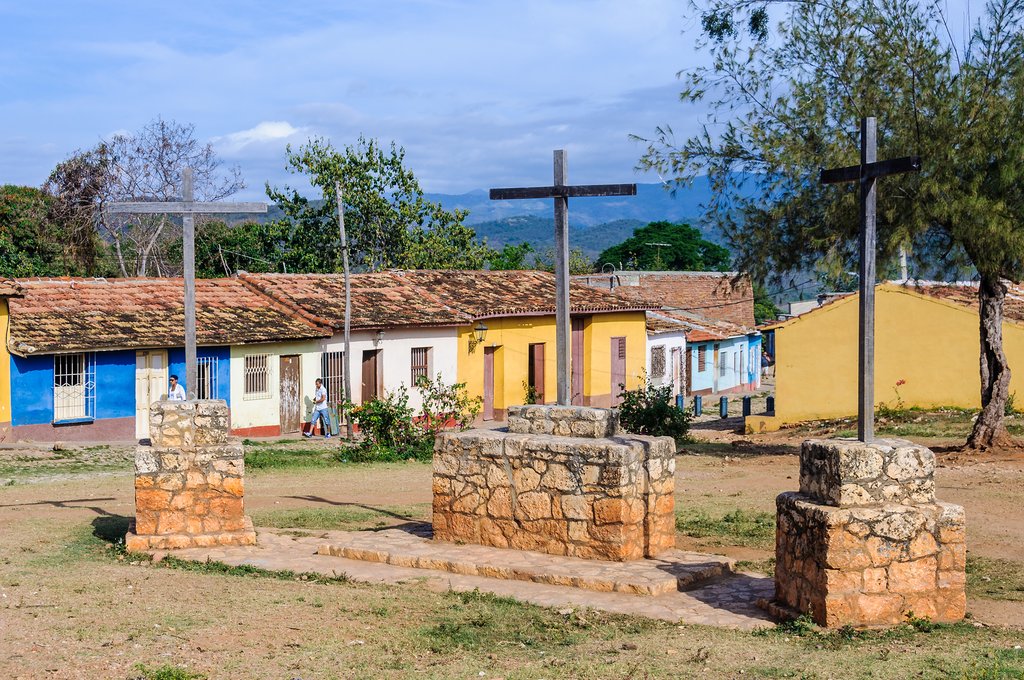
**Plaza de los Tres Cruces:** This unpretentious plaza, characterized by its bare-earth surface and simple 18th-century homes, is centered by three wooden crosses that have long served as the terminus for religious processions. Often overlooked by tourists, this humble area offers a glimpse into the real Cuba, untainted by the influence of tourism. Take some time to soak in the authentic atmosphere and observe the daily lives of the locals.
**Parque Céspedes:** Situated on the southern fringe of the historic core, Parque Céspedes is a paved and partially tree-shaded plaza where locals gather to play chess while young couples canoodle under a long arbor. The **Etecsa telephone exchange** and a modest church and town hall are also located here. Parque Céspedes is a popular meeting place and a great spot to relax and observe the rhythms of local life.
**La Maqueta:** Located at the corner of Colón and Dragones, the Casa Frías houses an impressive scale model (maqueta) of the city, meticulously depicting every building, balcony, and even every tree in its exact location. Guided history tours of the maqueta are available, providing a unique perspective on the city’s layout and historical development.
**Plaza Santa Ana:** On the eastern fringe of the casco histórico (historic district) stands the ruined shell of **Iglesia de Santa Ana**. Adjacent to the church, the city’s former jail has been transformed into a restaurant, bar, art gallery, and cultural event venue. Plaza Santa Ana offers a unique blend of history and modern entertainment, making it a worthwhile destination.
**El Alfarero Casa ‘Chichí’ Santander:** Trinidad is renowned for its pottery. The most interesting taller (workshop) is that of the Santander family, where two brothers each have an adjacent taller where you can observe the intricate process of pottery making. Be sure to bring Cuban convertible pesos (CUC) if you wish to purchase a souvenir of your visit.
### Escaping to the Coast: Playa Ancón
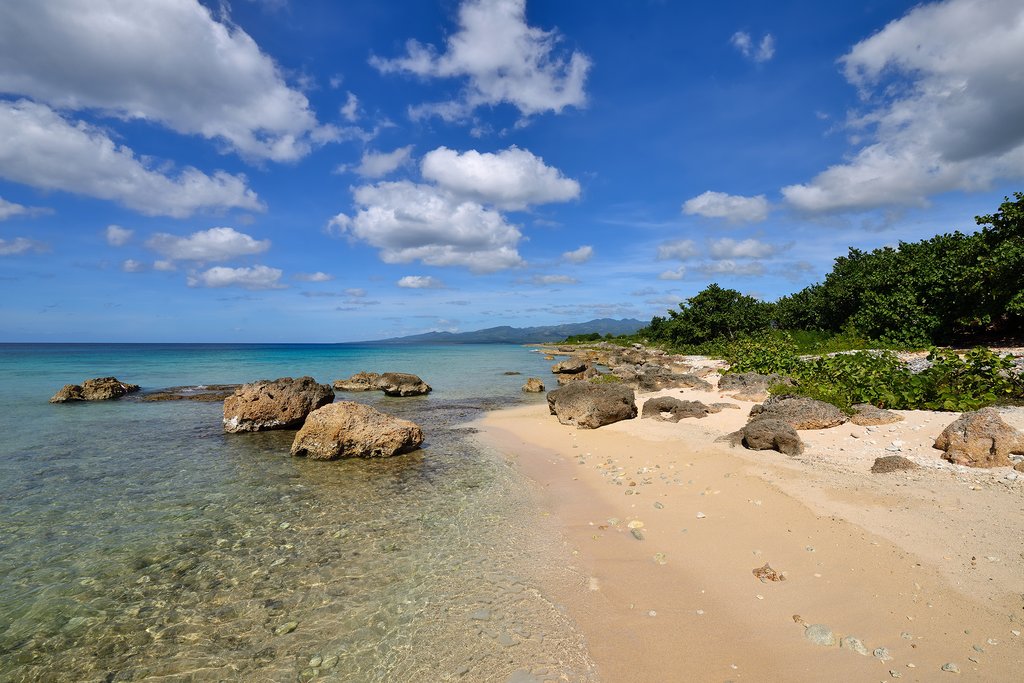
When you need a break from exploring the cobbled streets of Trinidad, head to **Playa Ancón**, a scintillating stretch of white sand beach where tourists from the three resort hotels bask in the sun. While snorkeling directly off the beach may not be exceptional, excursions—including opportunities for scuba diving—are offered to the idyllic **Cayo Blanco**.
The beach stretches along a peninsula that curves around the mangrove-lined **Bahía de Casilda** like a shepherd’s crook. While you can hire a taxi to reach Playa Ancón, the **TrinidadBusTour** shuttle also operates five times daily, providing a convenient and affordable transportation option.
### Experiencing Local Life: La Boca
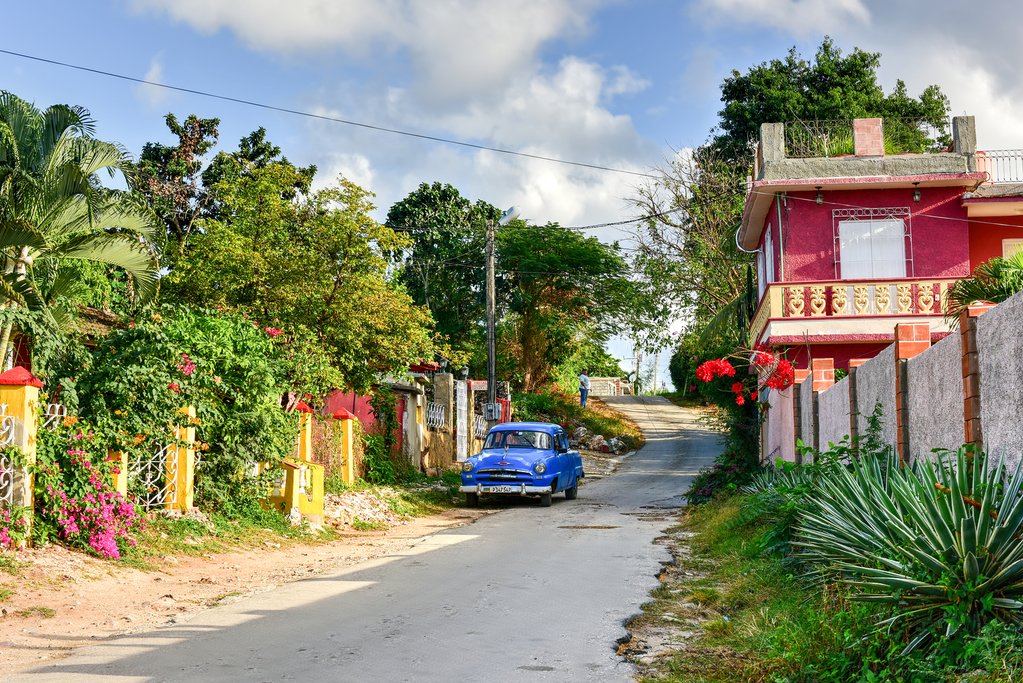
For a more authentic beach experience, Cuban families often prefer the rustic coastal hamlet of **La Boca**, located four miles west of Trinidad. Here, many trinitarios maintain second homes. While the beaches in La Boca may not be as pristine as those at Playa Ancón, and the Caribbean waters are somewhat rocky, the area offers stunning views of the Sierra Escambray. Furthermore, La Boca boasts several dozen private B&Bs, several excellent paladares, and the opportunity to spend a day at the beach alongside locals, providing a truly immersive cultural experience.
### Delving into History: Valle de los Ingenios
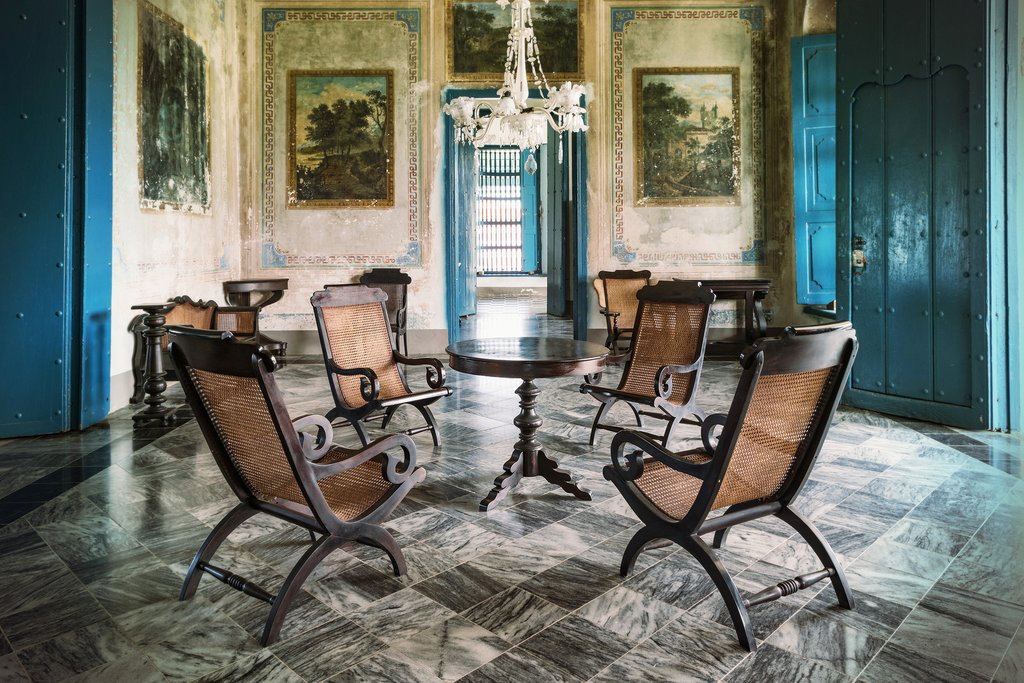
Trinidad owes its immense wealth during the colonial era to the ‘Valley of the Sugar Mills,’ situated five miles east of the town. This verdant valley was once entirely dedicated to sugarcane cultivation, but is now significantly depleted. Most of the 19th-century mills are now in ruins, having been destroyed during the Wars of Independence. However, several haciendas have been restored, offering a glimpse into the valley’s past. Most visitors head to **Hacienda Manaca-Iznaga**, the most complete of the former mills and manor houses. Here, you can climb a seven-story tower for panoramic views of the surrounding landscape. To avoid the crowds, consider heading further east to **Sitio Histórico Guaímiro**, a lovingly restored former hacienda adorned with spectacular wall murals and a chapel.
### Embracing Adventure: Activities in and Around Trinidad
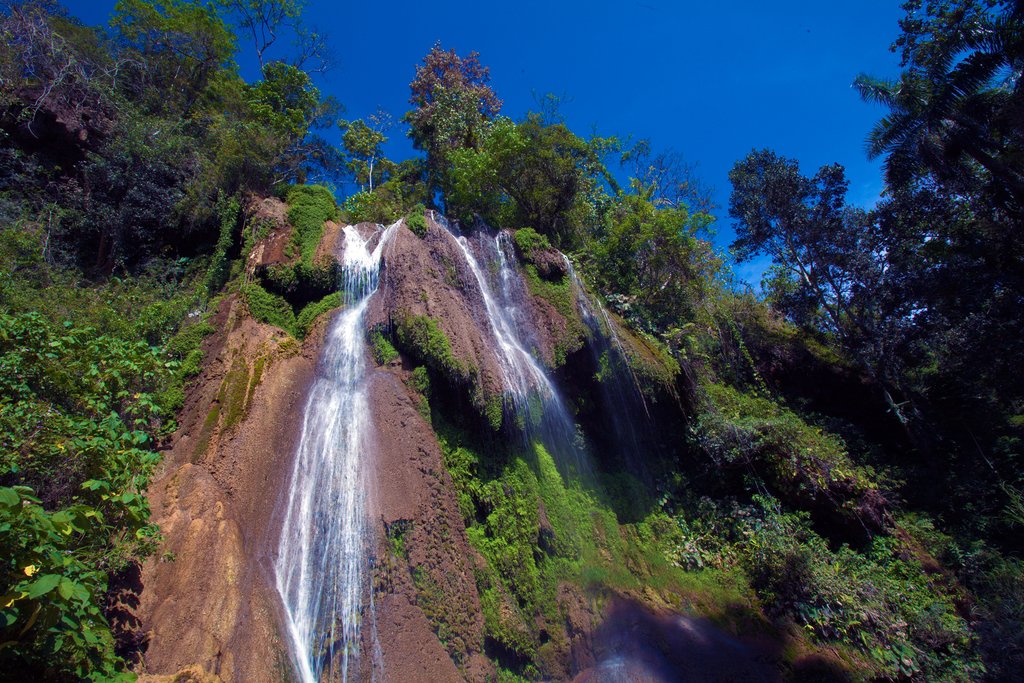
**Hiking:** Embark on an excursion from Trinidad for an open-air ride in an ex-Soviet Army truck to **Topes de Collantes**, located in the Sierra Escambray mountain range. The area boasts the best trail system in Cuba, offering opportunities to hike through thickly forested hills, adorned with lush jungle ferns, vines, and epiphytes. The cooler temperatures in the mountains provide a refreshing contrast to the heat of Trinidad, and you can cool off further by taking a dip in the pools beneath the waterfalls.
**Horseback riding:** Trinidad remains deeply connected to the countryside, and horseback riding is a popular activity for both locals and visitors. Several licensed private operators solicit business on the streets, making it easy to find a cabalgata (horse riding) excursion.
**Scuba Diving:** If you’re interested in exploring the underwater world, you can find operators offering scuba diving excursions at Playa Ancón.
## Crafting Your Trinidad Itinerary
Trinidad is a relatively small city, allowing you to easily explore the main sites in just two days. However, to fully appreciate the city’s charm and immerse yourself in its culture, it’s best to embrace a more leisurely pace, taking the time to mingle with locals and absorb the unique atmosphere. Three days in Trinidad is ideal, allowing you to dedicate a day to exploring beyond the city limits. During this day, you can visit the Valle de los Ingenios in the morning and relax at Playa Ancón in the afternoon. You can allocate another day for hiking in the mountains or embarking on a horseback riding adventure.
The TrinidadBusTour provides a convenient way to explore the surrounding area, making a five-times-daily circuit that includes the Valle de los Ingenios and Playa Ancón. Within the town itself, bicitaxis are the primary mode of transportation if you prefer not to walk. Taxis and scooters can also be rented for short trips outside of town.
There’s no single “best” time to visit Trinidad. While the winter months (November-March) are generally cooler than the summer months, the tourist crowds during peak season can be overwhelming. The throngs of tourists tend to dissipate during the summer months, making the city feel more intimate and personal. However, it’s important to note that the summer months can be brutally hot, afternoon thunderstorms are common, and prolonged rainstorms can occur frequently.
## Finding Your Home Away From Home: Where to Stay in Trinidad
During the peak winter months, Trinidad welcomes thousands of visitors each day, which can lead to a shortage of available lodging options. The town has only three relatively small hotels, along with three larger beach resorts of varying quality located near Playa Ancón.
Fortunately, Trinidad boasts more than 1,000 casas particulares (private B&Bs), which are the preferred accommodation option for the vast majority of travelers. Most B&Bs are relatively simple, but all offer the basic necessities of hot water and air-conditioning and/or fans. Staying in a casa particular provides the added benefit of living with a welcoming Cuban family, offering a unique cultural experience. Some homes within the historic zone are particularly impressive, featuring colonial-era antiques and a charming yesteryear ambiance. A few newer B&Bs even border on deluxe, providing a more luxurious experience.
Other lodging options include restored colonial homes and 19th-century townhouse mansions, offering a range of styles and price points. The best hotel in Trinidad—and one of Cuba’s finest regional options—is the **Iberostar Gran Trinidad**. While it may be more expensive and the luxury can feel somewhat removed from the authentic trinitario experience, it is a worthwhile option for those seeking more upscale accommodations.
The three beach resorts near Playa Ancón offer passable options for those primarily seeking sun, sand, and sea. However, they are located a bit further from the action in the town center.
## A Culinary Adventure: Where to Eat in Trinidad
Despite its small size, Trinidad boasts a surprising number of exceptional paladares, many of which are housed in colonial homes that showcase the luxury of a bygone era.
**Vista Gourmet:** This superb paladar offers alfresco rooftop dining with breathtaking views of the town, the distant mountains, and the Caribbean Sea. The owner, a sommelier and professional chef, is knowledgeable and serves an unbelievably varied buffet dinner.
**Sol Ananda:** Located on the south side of Plaza Mayor, this exquisite colonial-era restaurant is brimming with antiques, including brass beds in two of the small dining rooms. The menu features traditional Cuban criolla (local) dishes, including creative options like curried shrimp, as well as classic favorites like ropa vieja.
**Guitarra Mía:** The owner of Guitarra Mía is a well-known composer-guitarist, and trovadores are always present to entertain guests. The criolla menu features all the expected dishes, including ropa vieja and roast pork.
**Café Don Pepe:** Settle under a shade tree in this brick-lined patio to savor a refreshing iced coffee with cola, or recharge with a wickedly strong espresso or frothy cappuccino.
## Experiencing the Rhythms of Trinidad: Entertainment
Trinidad’s vibrant culture surprises and delights many visitors. From historic dive bars to lively discos, there’s something to suit every taste and preference. Much of the entertainment in Trinidad is infused with traditional Cuban rhythms. For example, every café and restaurant typically features trovadores, and groups of them can often be found serenading passing tourists in the shady plazas.
The epicenter of traditional Cuban son music is the **Casa de la Trova**, where enthusiastic locals of all ages eagerly get up to dance to songs by renowned trovadores like Israel Moreno.
Just a short walk west, the beat of bongos will draw you irresistibly to the **Palacio de los Congos Reales**, where captivating matinees and evening performances of an espectáculo afrocubano (Afro-Cuban show) are held.
Young locals showcase their salsa skills at **Casa de la Música**, located atop the staircase just off Plaza Mayor, where live bands often perform. For those who enjoy dancing the night away, **Disco Ayala**, a nightclub housed inside a cave filled with dripstone formations, offers a unique and unforgettable experience.
## Essential Trinidad Tips for a Memorable Visit
Especially during the winter months, it’s well worth waking up at dawn—around 6 am—to experience Trinidad at its most authentic. The silence is magical, the cool air is refreshing, and the tourist crowds are still asleep. Furthermore, the street life is stirring, and you’ll have it all to yourself as cowboys and cowgirls head off to work their farms.
The early morning hours are also the best time to capture stunning photos of the city. Alternatively, take an afternoon siesta and reemerge later in the day to witness the late-day sun gilding Trinidad’s brightly painted colonial houses.
Exploring the sloping cobbled streets of Trinidad during the day can be strenuous, particularly in the heat. It’s essential to stay hydrated by drinking plenty of bottled water. Protect yourself from the sun by wearing sunscreen and sunglasses, and ideally a wide-brimmed hat. Wear comfortable and sturdy shoes to navigate the cobblestones, and opt for shorts or skirts (of a modest length, as Trinidad is a relatively conservative city) to stay cool.
Trinidad is a shopper’s paradise, offering a wide array of souvenirs and handicrafts. Several streets in the historic center are lined with stalls selling everything from simple wooden statues and paper-mâché classic cars to high-quality art and guayaberas (iconic pleated Cuban shirts).
Numerous vendors sell a variety of lace and linen pieces. The best shop for these items is **La Casa de Crochet**, located immediately east of Plaza Mayor. Around the corner, at **Casa-Estudio Lázaro Niebla**, the eponymous artist crafts astonishing likenesses of real-life city elders onto colonial-era cedar panels. While his works may be expensive, they represent a unique investment by an artist who is gaining international recognition. Among the dozens of little art studios and galleries in Trinidad, **Casa-Galería Carlos Mata**, half a block north of the Antiguo Convento de San Francisco de Asís, stands out. Proprietor Carlos is known as the “painter of the night” for his evocative scenes of nocturnal Trinidad.
B-663

